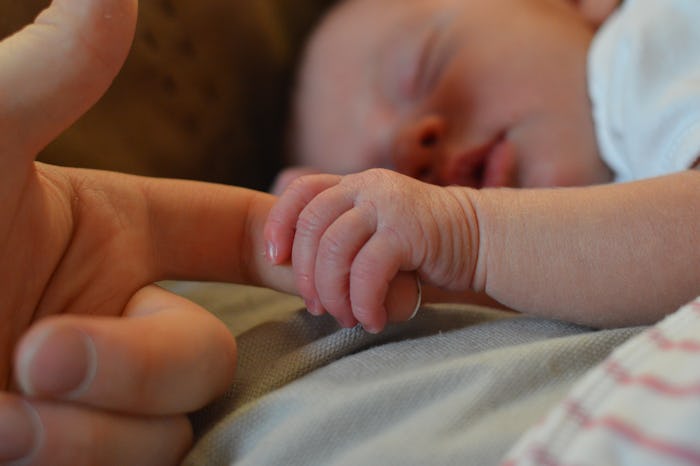News
Here's How A Mom's Brain Responds When She Hears Her Baby Crying
A baby's cries incite a lot of different things for a lot of different people. For airplane passengers, a crying baby creates an annoyance, and for teenagers, a crying baby creates a lot of confusion. But for moms, a crying baby (that doesn't even belong to them) creates an immediate response to drop everything and make sure that the baby is OK. Science backs this up, and new study found how a mom's brain responds when she hears her baby crying is an immediate action to help her child in distress.
The new study, published in the Proceedings of the National Academy of Science journal observed the brains of 684 mothers in 11 countries and how they respond to their crying babies with the objective to find what regions of the brain responded to infant distress, or the baby's cries.
What the study found won't surprise any new or seasoned mother. According to the study, the majority of the mothers responded to their baby's cries by picking their infants up, holding them, and talking to them. This was the preferred reaction over displaying affection toward their child, distracting their baby, or nurturing them. According to Medical News Today, this primary response triggered the movement and speech areas of the brain. Holding their child and talking to them, according to Medical News Today, were rapid and robust movements to get their child to stop crying.
Moms know that fast action, no matter what it takes, gets the job done (the study found that most moms respond to picking up their child within 5 seconds of hearing them cry).
The study's findings were relatively consistent among the cultures, according to Medical News Today, meaning that holding a baby and talking to it is the most common response and method to get a baby to stop crying.
How a mom responds to their crying baby says a lot about a mother. One study, published in Child Development in August found that how a mom responds to her babies cries could be an indicator of their attachment style to their child, according to Psych Central. Mothers who were emotionally neutral with their crying infants, according to Psych Central, were more likely to have emotionally resistant infants.
Those emotionally resistant infants were the same infants that didn't seek out their parent during moments of distress six months later, according to KPCC, thus making them more independent. The study found that the more withdrawn a mother was, the more likely the baby was to be "inconsolable" while distressed, trying to get the attention of their mom.
But the way a mom responds to her crying baby is a learned behavior, according to one 2014 study. The study, according to Science Daily, found that moms who had positive experiences with their care givers, or came to terms with negative experiences with their care givers, were more than likely to respond quickly and "sensitively" to their own child's cries. It would make sense for emotional trauma and experience to play into this.
Although this new study found that the most common method of consoling a baby is picking it up and talking to it doesn't mean it is always the most effective or most popular. Some mothers believe in the "cry it out" method — or, letting a baby cry until they're soothed by themselves. This method was meant to delay parent's response times to their babies cries, thus letting them sleep a little longer, according to Parenting, and not create an independent or detached child. But a 2016 study, according to CNN, found that this method is effective and did not cause "lasting emotional problems for babies." So if a mom wants to wait a little longer after hearing their cries and not pick her child immediately, that is OK, too.
No matter how a mom responds to her baby, at least she is responding to her child. This new study's findings, according to Medical News Today, can help link their intentions of caregiving to their actions. The study is effective in doing just that.
